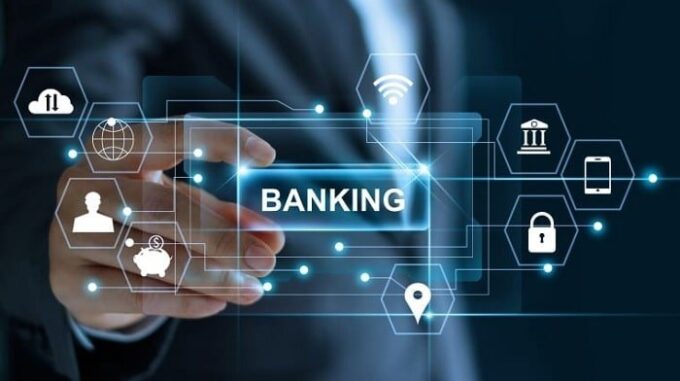Today, in the era of anywhere and anytime banking; customers exerting new measures over how they access and manage their finances is no longer surprising. Earlier an institute acts and adapts better it is in the long run.
Today’s modus operandi of the banking sector is transforming. The whole range of banking operations, including savings, deposit accounts are available from any location at the convenience of an individual. One can access through multiple channels, including mobile banking and the web at the same time. Accurate and on-time information about customer relations is available. There is one single window between the bank and customers. Thus the concept of ‘anywhere, anytime’ banking is justified in regards to core banking. For further information visit https://www.edgeverve.com/finacle/finacle-core-banking-solution/ for reference.
What is core banking?

Core banking system enables all the transactions made by customers to be live in real-time. It is facilitated by having a centralized system and networked bank branches. Core banking is the fusion of channels through cables, satellites, the internet, and cloud Platforms.
According to Finacle Core Banking; this new terminology includes processing daily transactions like deposits and withdrawals, loans, calculating interests, mortgages, creating new accounts. It also provides customer relationship management activities.
The necessity of transforming the Core Banking System

Earlier the software was responsible for the legacy systems and applications were mostly old fashioned. Previously, slow speed was not a severe issue. However, with advancements in technology, new and improved smartphones flooding the market, and with readily available internet resulting in high data usage, this scenario has now changed. It has resulted in increased use of internet banking and mobile banking.
Moreover, the Covid-19 Pandemic has elevated this issue, and the core banking system is now under additional stress. It has eventually forced all the banks and financial institutions to rethink their digital strategy, resulting in banks offering improved online services. Thus, resulting in digital transformation and improved online customer experience.
Banks must move from their product-centric approach to a customer-centric approach by providing an omnichannel experience to customers. Transactions have to be faster, easier, and safer, requiring banks and Core Banking Systems digital transformation.
The maintenance of heavily customized legacy platforms is getting complex. It is also becoming difficult and expensive to find resources with knowledge of older technologies like COBOL and Mainframe Systems. Another reason why banks should opt for digital transformation and update or upgrade their legacy systems.
Digital transformation of Core Banking Operations

There are three broad categories of Core Banking Platforms. Legacy platforms are closed platforms. Service-Oriented Platforms enable Real-time Processing. Cloud-Native Platforms support APIs and Real-Time Processing.
Banks can analyze and decide their transformation strategy based on criteria viz.:
- The viability of their current Core Platforms
- Their need to enhance their digital capabilities
- Risk of losing customers to competitors
- Market dynamics
- Their budgetary constraints
Although every financial institute offers similar products, their services do differ. Hence, the digital transformation needs customization according to the banks’ requirements. The banks should plan their business priorities, technical architecture, and modernization plan structuring, incorporating cloud architecture and data migration approaches.
Implementation of changes to its core systems will affect all the subsidiary channels and functionalities. Thus, every bank must train its employees to embrace the changes and adapt to the new technology. The only way to retain clients and attract potential business is by offering customized service.
Below listed are few Digital transformations approaches by Core Banking:

1. Short term wait
Some banks with a sustainable platform and low-risk profile can wait for a short period. They can analyze market dynamics and be ready to upgrade. They can take a step forward after seeing a successful transformation example of another bank. They can immediately create a similar roadmap to upgrade their core systems and also build fresh business strategies while upskilling their team members.
2. Re-Platform
If a complete transformation is not needed; Re-Platforming can be a beneficial method. It is cost-effective compared to other options. Re-Platforming the core systems is a low complexity data strategy. It consists of upgrading the current versions and the databases. Such minor changes will not cause any significant difference in the core functionalities of banks’ systems. It also doesn’t require any new skillsets in employees during re-platform implementation.
3. Re-Factor
Re-factoring is a more aggressive approach compared to Re-Platform? In this method, the codebase is up to the mark. It enhances readability, increases extensibility, and eases maintenance. After re-factoring, one can implement cloud architecture along with the handling of and more complex data.
4. Augmenting
When The modernization of the existing Core Platform isn’t sufficient to improve the bank’s business capabilities; the introduction of augmentation is the right choice. In this method, installing new systems is common to work together with the existing legacy core systems. The new core systems provide capabilities that current legacy systems don’t offer. It eventually allows Banks to launch new products and services, and later on, it will help generate new revenue streams.
5. Replacement
When the existing core systems aren’t viable to effectively carry out the daily data needs, the entire system’s replacement is necessary. Although it is an expensive undertaking, it is the best option in the long run. It has extensive implementation schedules. This process can be complicated and even risky and will need implementation in steps. But it is an urgent requirement if current functionalities are failing. A plethora of core banking solutions with advanced technologies is now available for the banks.
Conclusion

Digital Transformation of Core Banking will enhance the speed and provide a seamless experience to customers. It will eventually improve bank functioning and productivity.
Furthermore reducing expenses in the long term and fetching more revenue to the business. Core Banking solutions are now considered an integral part of a lifestyle. It is no longer just a mere product or service. Today, consumers are no longer willing to compromise on services and a financial institution that fails to provide quality service will quickly decline.









